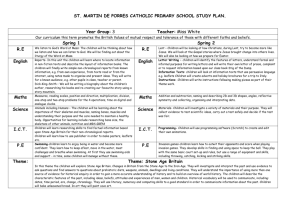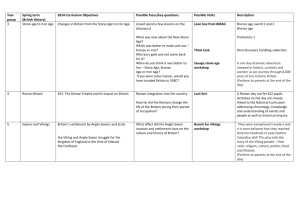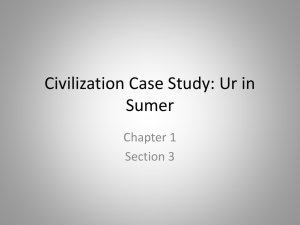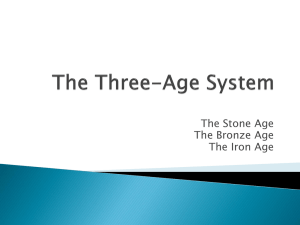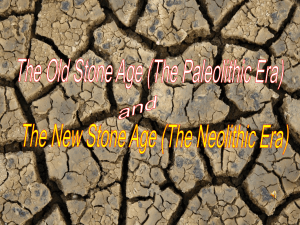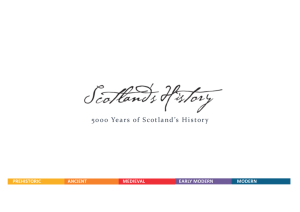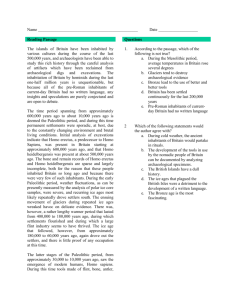Prehistory at-a-glance summary sheet
advertisement
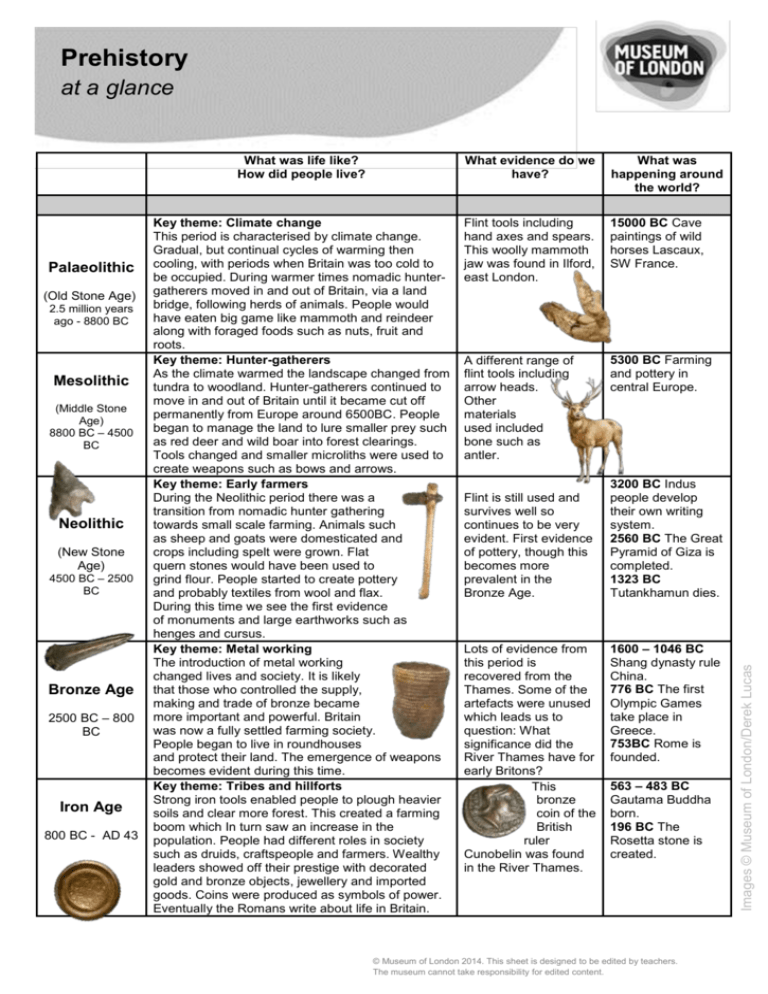
Prehistory at a glance (Old Stone Age) 2.5 million years ago - 8800 BC Mesolithic (Middle Stone Age) 8800 BC – 4500 BC Neolithic (New Stone Age) 4500 BC – 2500 BC Bronze Age 2500 BC – 800 BC Iron Age 800 BC - AD 43 What evidence do we have? What was happening around the world? Key theme: Climate change This period is characterised by climate change. Gradual, but continual cycles of warming then cooling, with periods when Britain was too cold to be occupied. During warmer times nomadic huntergatherers moved in and out of Britain, via a land bridge, following herds of animals. People would have eaten big game like mammoth and reindeer along with foraged foods such as nuts, fruit and roots. Key theme: Hunter-gatherers As the climate warmed the landscape changed from tundra to woodland. Hunter-gatherers continued to move in and out of Britain until it became cut off permanently from Europe around 6500BC. People began to manage the land to lure smaller prey such as red deer and wild boar into forest clearings. Tools changed and smaller microliths were used to create weapons such as bows and arrows. Key theme: Early farmers During the Neolithic period there was a transition from nomadic hunter gathering towards small scale farming. Animals such as sheep and goats were domesticated and crops including spelt were grown. Flat quern stones would have been used to grind flour. People started to create pottery and probably textiles from wool and flax. During this time we see the first evidence of monuments and large earthworks such as henges and cursus. Key theme: Metal working The introduction of metal working changed lives and society. It is likely that those who controlled the supply, making and trade of bronze became more important and powerful. Britain was now a fully settled farming society. People began to live in roundhouses and protect their land. The emergence of weapons becomes evident during this time. Key theme: Tribes and hillforts Strong iron tools enabled people to plough heavier soils and clear more forest. This created a farming boom which In turn saw an increase in the population. People had different roles in society such as druids, craftspeople and farmers. Wealthy leaders showed off their prestige with decorated gold and bronze objects, jewellery and imported goods. Coins were produced as symbols of power. Eventually the Romans write about life in Britain. Flint tools including hand axes and spears. This woolly mammoth jaw was found in Ilford, east London. 15000 BC Cave paintings of wild horses Lascaux, SW France. A different range of flint tools including arrow heads. Other materials used included bone such as antler. 5300 BC Farming and pottery in central Europe. Flint is still used and survives well so continues to be very evident. First evidence of pottery, though this becomes more prevalent in the Bronze Age. Lots of evidence from this period is recovered from the Thames. Some of the artefacts were unused which leads us to question: What significance did the River Thames have for early Britons? This bronze coin of the British ruler Cunobelin was found in the River Thames. 3200 BC Indus people develop their own writing system. 2560 BC The Great Pyramid of Giza is completed. 1323 BC Tutankhamun dies. 1600 – 1046 BC Shang dynasty rule China. 776 BC The first Olympic Games take place in Greece. 753BC Rome is founded. 563 – 483 BC Gautama Buddha born. 196 BC The Rosetta stone is created. © Museum of London 2014. This sheet is designed to be edited by teachers. The museum cannot take responsibility for edited content. Images © Museum of London/Derek Lucas Palaeolithic What was life like? How did people live?
